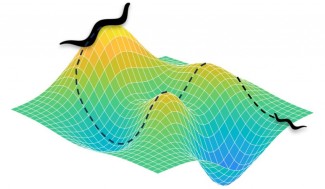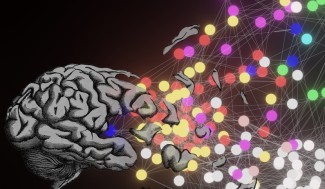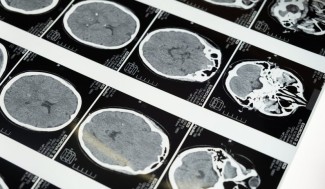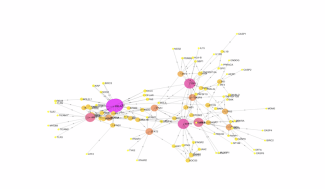
PhD, CR1, PI, INRIA
Team presentation
The NERV team is dedicated to exploring how the brain functions as a complex network. Put simply, they aim to "read" and "understand" brain signals to create tools that could one day help people with brain disorders. Their main goal is to design technologies that enable computers to connect to the brain—known as Brain-Computer Interfaces (BCIs)—in a gentle and non-invasive manner, making everyday life easier for those suffering from neurological disorders.
The NERV team aspires to develop cutting-edge analytical tools and innovative technological solutions to decrypt brain functions. Focusing on the connectivity networks that govern the brain, the team seeks to understand how these networks operate and how they can sometimes become dysregulated. Their research primarily aims to monitor these dysfunctions and, where possible, repair them. To achieve this, they work on enhancing non-invasive brain-computer interfaces (BCIs), which represent a promising bridge between technology and our understanding of the brain.
- Multiscale Network Analysis: By studying the brain at various levels of detail, they aim to identify functional patterns that are characteristic, whether normal or pathological.
- Geometrical Network Embedding and Integration: The team explores new ways to represent these networks to simplify their study and improve comparisons.
- Multimodal Data Fusion: By integrating data from various neuroimaging techniques, they aim to enhance the efficiency of BCIs through machine learning.
- Hybrid Brain-Computer Interfaces: Their research focuses on how these systems can improve interactions between the human brain and machines.
- Network-Based Improvements for BCIs: They believe that brain network characteristics can provide valuable insights for better decoding users’ mental intentions.
Current projects within the team tackle questions such as multiscale brain network modeling, detecting abnormal state transitions in non-Euclidean spaces, and developing innovative hybrid controls for brain-computer interfaces. Through this research, the NERV team hopes to transform our ability to treat and manage neurological disorders by providing innovative technological solutions that could revolutionize the field of brain health.
- Ben Messaoud R., Le Du V., Bousfiha C., Corsi M.C., Gonzalez-Astudillo J., Kaufmann B.C., Venot T., Couvy-Duchesne B., Migliaccio L., Rosso C., Bartolomeo P., Chavez M. & De Vico Fallani F. (2025). Low-dimensional controllability of brain networks. PLoS Comput Biol, 21(1), e1012691. https://doi.org/10.1371/journal.pcbi.1012691
- Presigny C., Corsi M.C. & De Vico Fallani F. (2024). Node-layer duality in networked systems. Nature Communications, 15, 6038. https://doi.org/10.1038/s41467-024-50176-5
- Venot T., Desbois A., Corsi M.C., Hugueville L., Saint-Bauzel L. & De Vico Fallani F. (2024). Intentional binding for noninvasive BCI control. J Neural Eng, 21(4). https://doi.org/10.1088/1741-2552/ad628c
- Dichio V. & De Vico Fallani F. (2024). Exploration-Exploitation Paradigm for Networked Biological Systems. Physical Review Letters, 132(9), 098402. https://doi.org/10.1103/physrevlett.132.098402
- Corsi M.C., Chevallier S., De Vico Fallani F. & Yger F. (2022). Functional connectivity ensemble method to enhance BCI performance (FUCONE). IEEE Trans Biomed Eng, 69(9). https://doi.org/10.1109/tbme.2022.3154885
- Obando C., Rosso C., Siegel J., Corbetta M. & De Vico Fallani F. (2022). Temporal exponential random graph models of longitudinal brain networks after stroke. J R Soc Interface, 19: 20210850. https://doi.org/10.1098/rsif.2021.0850
Team members

PhD, CR1, PI, INRIA

Dr, PI, CNRS

PhD, PI







